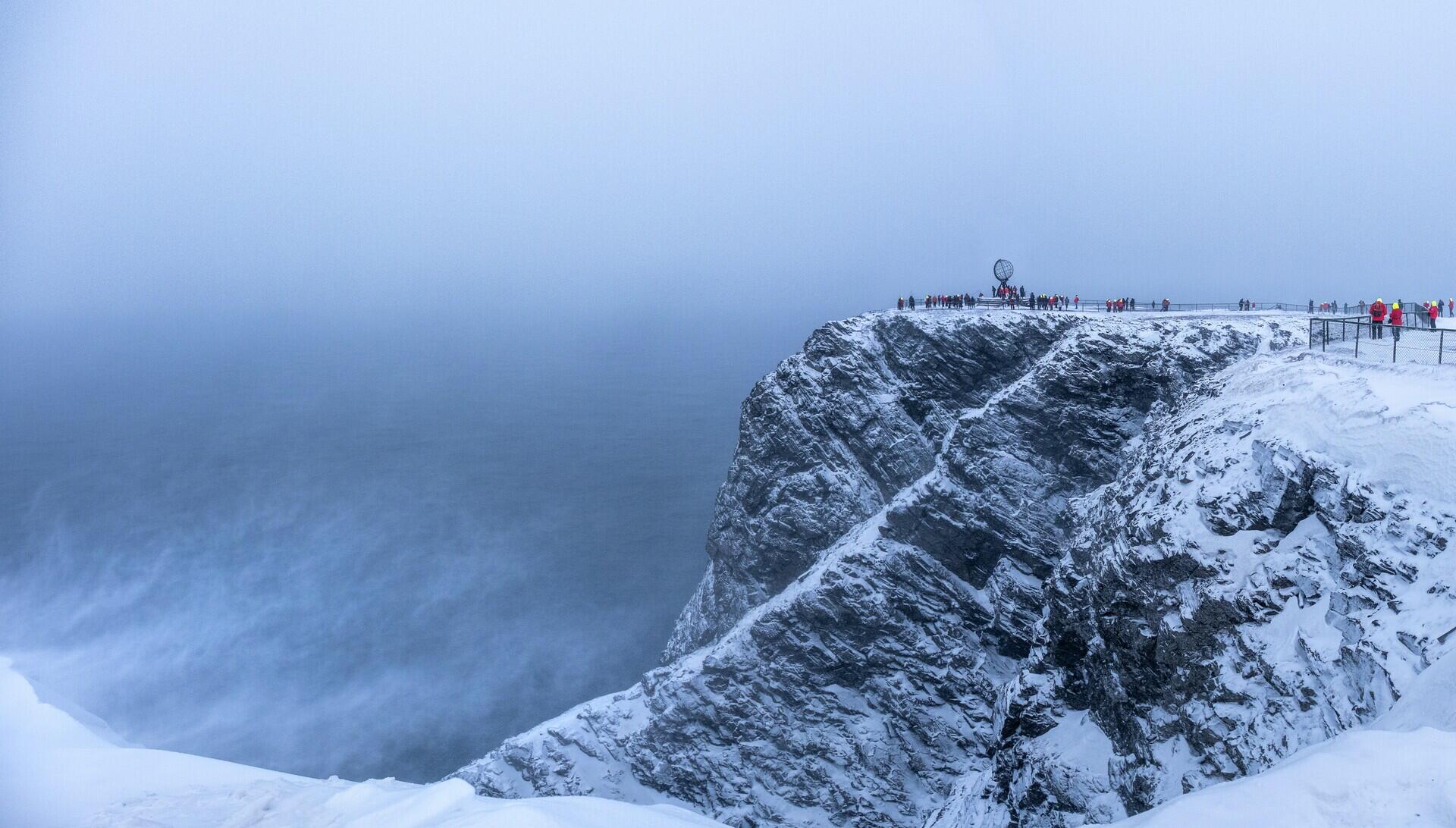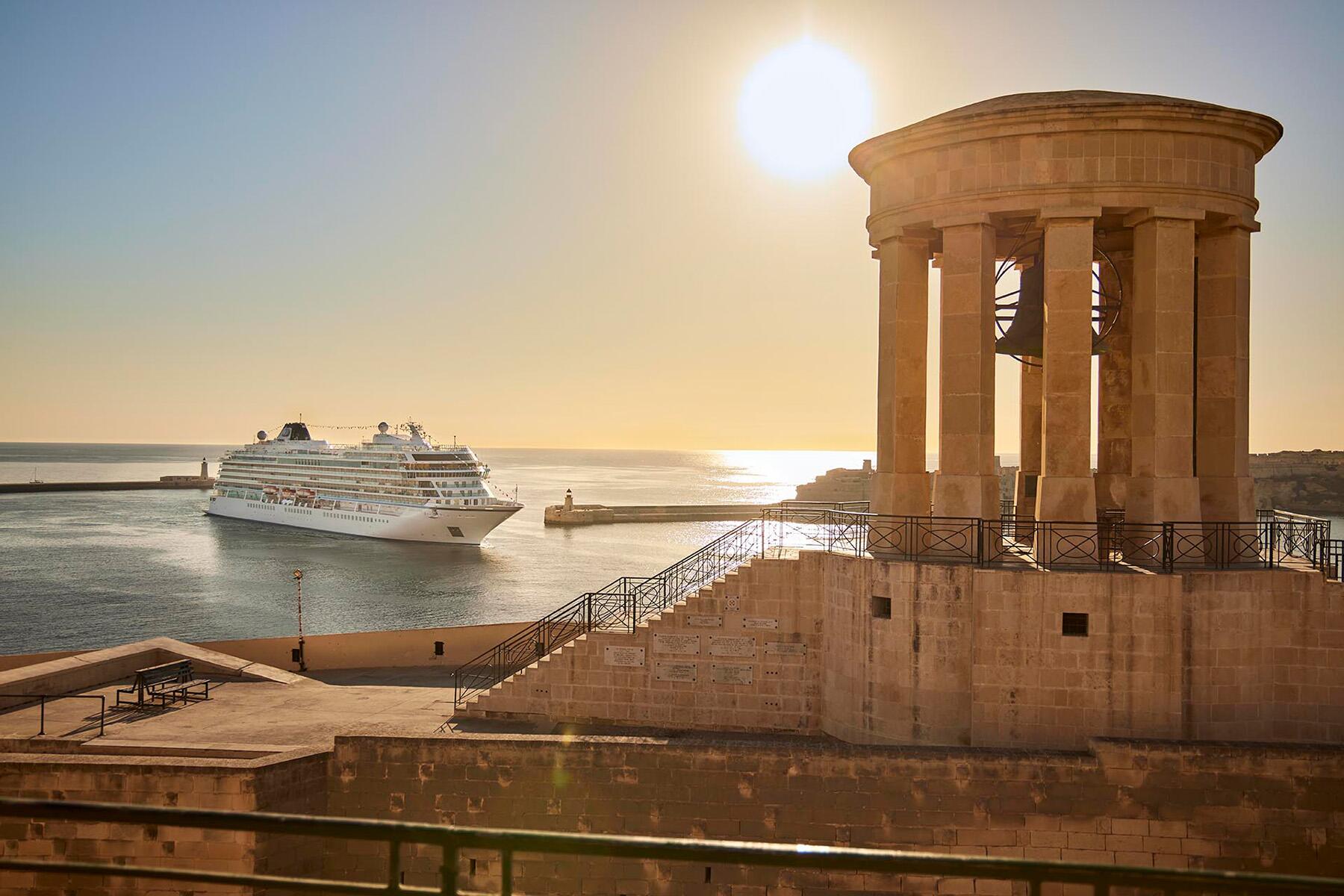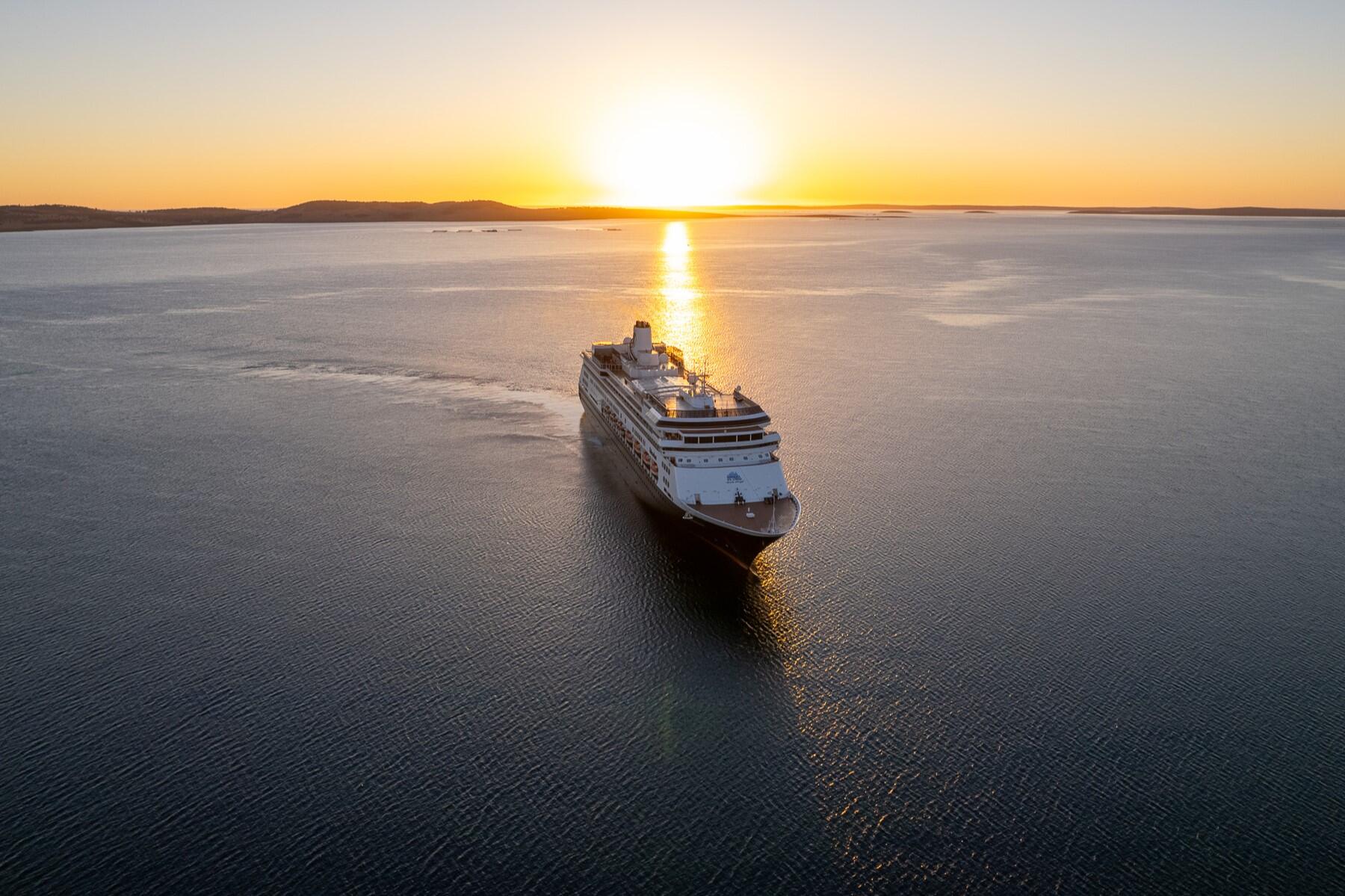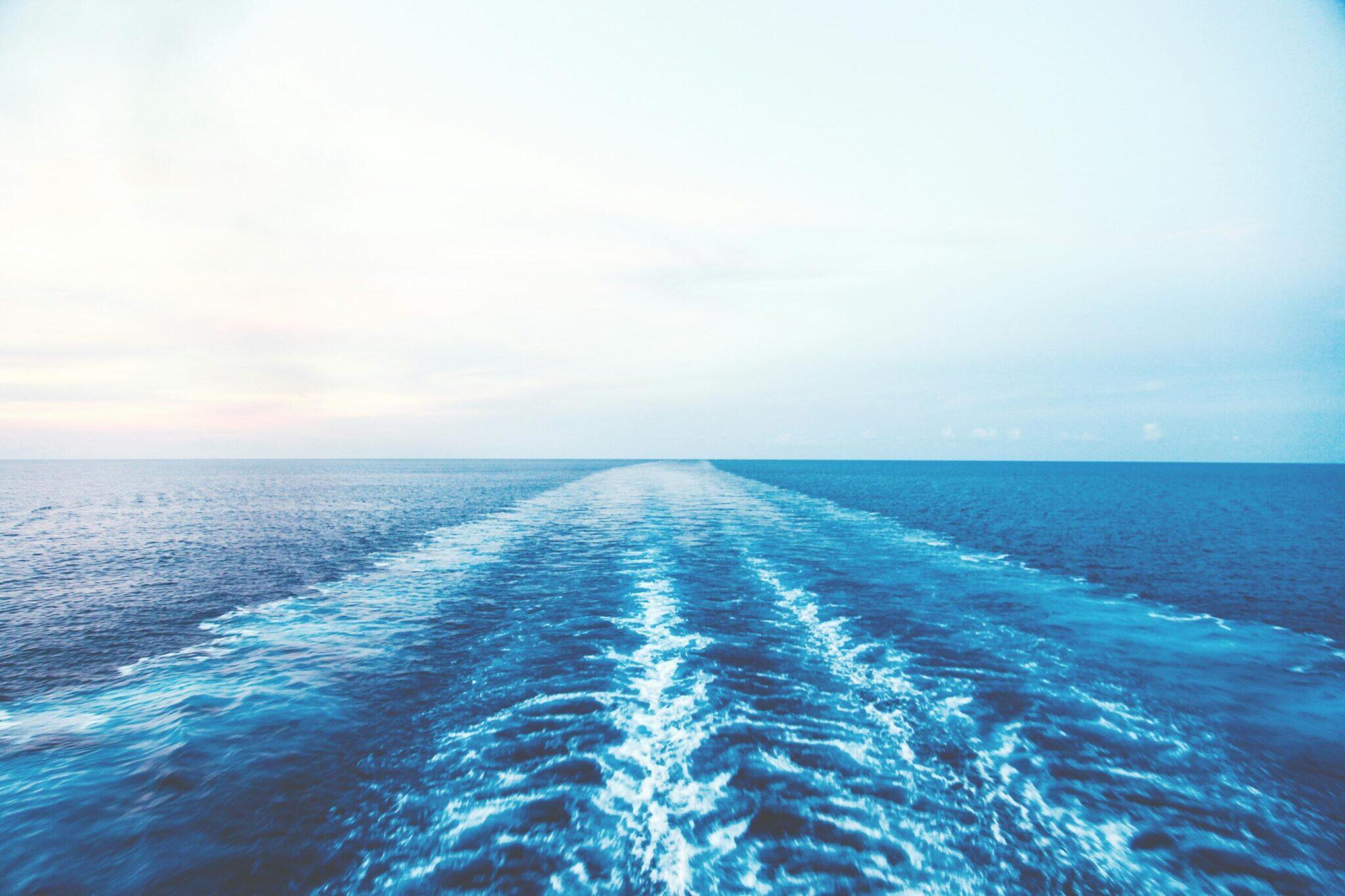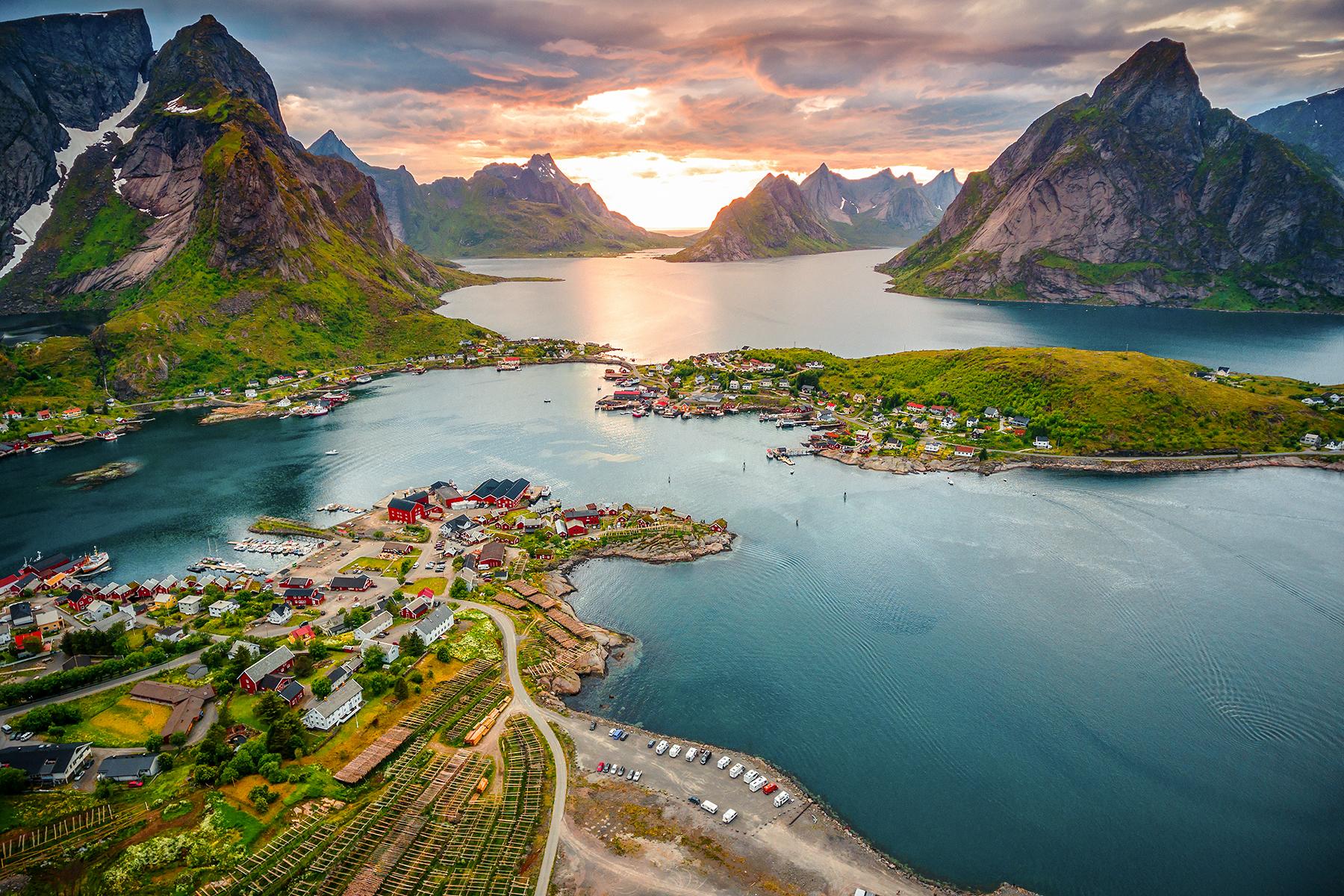A cruise along Norway's coast is the best way to see the country.
There’s no better (or more comfortable) way to see Norway’s highlights than on a Viking Ocean Cruises coastal cruise that dips into some of the country’s famous fjords, the most breathtaking (and famous) of which are along Norway’s west coast. Since all cruises include at least one excursion option in every port (usually a walk or a panoramic bus tour), you’ll get an overview of every port in which the ship calls and have options to do more extensive exploring or fun activities for a fee. Viking coastal cruises typically start in Bergen or London during the summer high season and include port calls in Scotland and the UK. But passengers wanting to get a fuller view of what Norway offers may also want to stop for at least one night before or after the cruise in Oslo, a remarkably accessible city with a compact, historic core and excellent public transportation. The dramatically beautiful train ride between Oslo and Bergen (one of Europe’s great train routes) is your best bet for transportation between the two cities. Almost all the other highlights of the country, including most of Norway’s famously beautiful fjords, waterfalls, and overlooks, are accessible on a coastal cruise.
Top Picks for You
Bergen
Norway’s second-largest city (after Oslo) is also supposedly Europe’s rainiest, but most visitors will forgive the rain and just enjoy the historic port area, stunning surrounding mountains, and winding cobblestone streets. Everything is compact and within walking distance once you’re in the port area, and all Viking voyages include an overnight in Bergen that will give you plenty of time to enjoy the city. The highlight is historic Bryggen (though in truth, most of the 14th-century buildings here are reconstructions, since the area has suffered from several fires); in the buildings are mostly shops where you’ll find some great local crafts and restaurants. Stroll over the city’s main square and check out the Bergen Kunstmuseum, where the collection includes both Norwegian painters (including Munch) and also European painters like Picasso and Kandinsky. If you’d like to see a traditional Norwegian stave church, Fantoft Stavkirche is a great local example, and it’s reachable by public transit or an organized excursion from the ship. If the weather is clear, don’t miss a trip up to the top of Mt. Fløyen via the Fløibanen (funicular); at the top, you can pet the resident goats, hike in the forest, and have a snack at one of several cafes (you can also take the trail all the way back down into town if you have time).
What to Eat: King crab, sold by the pound at the fish market and cooked in seawater, is expensive but delicious and available from most of the open-air restaurants at the fish market (though don’t be surprised if the chef has bought several kilos for the shipboard seafood buffet). If you’re looking for something cheaper, grab a crab shell filled with steamed crab meat or a reindeer hot dog. Or, if you’d like to try a Norwegian waffle or pastry, head to Kaf Kafe Bryggen in the historic area.
What to Buy: If you’re just landing in Norway, you’ll find a wide selection of sweaters, hats, and gloves from Dale of Norway here (but be aware that a simple hat may set you back more than US $50). All the stores sell cheaper, often locally crafted souvenirs, including plenty of moose-themed wares.
Geiranger
A UNESCO World Heritage Site (named in 2005), Geirangerfjord is one of Norway’s most beautiful and famous fjords. Ten miles long, with almost 1000-foot walls, it’s dotted with magnificent waterfalls, the most famous of which are the Seven Sisters, the Bridal Veil, and the Suitor, along with occasional homes and farms, which seem to perch on the cliff sides. At the end of the fjord sits a tiny village with a year-round population of just 250 (which might increase up to 5,000 in the summer high season). There are two hotels, one right on the canyon floor and another a bit further up the mountain. Ships typically enter Geirangerfjord very early in the morning and leave before sunset to give passengers a chance to see the canyons in a different light. Unfortunately, only one ship can dock (the first to arrive, which is usually the Hurtigruten coastal ferry); all others must tender their passengers ashore (and there can be three ships a day in Geiranger, which tends to overwhelm the village). If you want to learn more about Norway’s fjords, then take a short stroll over to the Stiftinga Geirangerfjorden Verdsarv, a contemporary-style museum devoted to the area and its history. Going to the top of the Eagle’s Bend, which is 2,000 feet above the village, is on every bus itinerary. In the other direction, the Flydalsjuvet offers views from directly above the village. If you want to do something more active, then consider taking an e-bike excursion from Geiranger Adventure, either by renting a bike or taking a guided trip arranged through the ship; with the battery assist, even the least intrepid biker will be able to pedal up steep hills with ease. (If you don’t want to pedal, you can rent a little electric car-like vehicle, but it’s something like $100 per hour.) The other popular activity here is kayaking, and Viking or Geiranger Adventure can hook you up on the water, too.
INSIDER TIPIf you don’t mind getting up early, there are few better experiences in the world than standing on your cabin’s balcony or the quiet deck of a ship sailing up the fjord as the waterfalls are lit by the morning sun. On every Viking ship, the most dramatic views are typically from the infinity pool on the aft deck.
What to Eat: There are plenty of overpriced fast-food restaurants in and around the village’s short main street, but if you’re looking to spend time at a nice sit-down lunch (and pay accordingly), there few more picturesque spots than the lovely Olebuda, in a building that was once Geiranger’s first grocery store. Otherwise, the overpriced food often sends passengers back to their ship for lunch (if they have time).
What to Buy: The sole purpose of most of the village’s shops are to deal to the copious tourist trade, so there are few good buys or quaint shops. Still, you’ll find a few interesting trinkets in the local stores, some of it even made in Norway, and one store, the Geiranger Gallery, sells nice, locally made art and crafts.
Recommended Fodor’s Video
Molde
This small city of about 27,000 people sits on the northern edge of the Romsdal Fjord on the Romsdal Peninsula. Heavily bombed during World War II, it’s a fairly modern looking place and doesn’t display an overt sense of either charm or history. However, just up the hill from the port (which is near the center of town and within walking distance of shops and restaurants) is the Romsdal Museum, which consists of a contemporary building that holds the history collection and also almost 40 historic buildings (some dating from the 1600s) that were moved to Molde from all over Norway. You can see an ancient church and several examples of sod-roofed houses. If you want to explore further afield, you can take an excursion along the Atlantic Road (the most famous stretch being from Molde to Kristiansund as it crisscrosses across small islands and a section of open ocean). The only more famous road in Norway is the Trollstigen, which is the land crossing between Molde and Geiranger; climbing to almost 3000 feet at its summit, where you’ll find an overlook and (naturally) a visitor center.
What to Eat: Molde has plenty of little cafes and restaurants, though one of the better options is the cafe in the Romsdal Museum, popular even with locals. You’ll quickly discover that Norwegians are wild about berries, and Molde is particularly known for its strawberries (likely among most expensive you’ll find anywhere in the world); yet the little local strawberries, usually picked earlier that morning, are particularly sweet and delicious, and often sold at stands along the main street.
What to Buy: If you are looking for a quieter endeavor, the town’s main street is lined with plenty of shops in which to browse. Several sell traditional Norwegian cultural outfits, though these are typically custom-made and quite expensive. You might find some fairly reasonably priced pewter ware at one of the local stores or even sterling silver at some of the local jewelry shops.
INSIDER TIPAs you sail north, you’re eligible to join the Order of the Blue Nose (a traditional naval designation given to those crossing the Arctic Circle for the first time). On Viking cruises, you’ll have to take a plunge into an icy pool, kiss a fish, and drink a shot of aquavit to gather your certificate.
Leknes
Although they sit above the Arctic Circle, through some geographical magic, temperatures in the Lofoten Islands rarely get below 15 degrees, even in the dead of winter. But in the summer (especially when the sun shines), the islands are magical, and Norwegians flock with their tents to camp beside the sea, lie on the beautiful white-sand beaches, and enjoy the fjords (fishing is the area’s main business). Leknes is the main town in Lofoten, and its Lofotr Viking Museum is justifiably famous. Haukland Beach is an idyllic setting (often called Norway’s most beautiful beach) with sparkling white sand and clear water next to a hilly sheep’s meadow a few miles outside of town; it’s popular with both day visitors and campers. You’ll likely find no more picturesque fishing village than Nusfjord, and its little yellow and red huts are mostly now tourist accommodations, shops, and cafes. Just south of Leknes in Gravdal is the tall, red Buksnes Church; though not a traditional stave church, it’s one of Lofoten’s most beautiful, dating from 1905. The more energetic can take a guided hike around Tjønndalen Lake, go sea-fishing, or horseback riding.
What to Eat: There’s nothing much at the port, which is a couple of miles outside of town, but you can get a delicious baguette or sandwich and a nice coffee at Surprise Kafe in Leknes.
What to Buy: There’s a small tourist shop at the port, where you’ll find a few souvenirs, but the shopping is better in Leknes. Once you cross the Arctic Circle, it seems that everyone sells delicious cloudberry jam. If anyone is giving out samples, try some, and you’ll likely be a convert to the fruit that tastes something like a raspberry crossed with a currant.
Tromsø
With a population of some 75,000, Tromsø is the largest city in Norway above the Arctic Circle, and it’s a surprisingly cosmopolitan place. Many of the tourist sights are along the waterfront, within walking distance from the cruise port, including Polaria, a museum devoted to the Arctic lifestyle and its wildlife, and the Polar Museum. The city’s architectural highlight is the Ishavskatedralen (Arctic Cathedral), which was created in the shape of a Sami tent (the Sami are the indigenous people of northern Norway who depend on reindeer for much of their livelihood); during the summer months, there are frequent late-night concerts in the cathedral. If you are itching to do something more adventurous, then several local outfitters can help you get out and do more active Arctic exploring. One of the best experiences may be at the Tromsø Villmarkssenter, about a half-hour outside of Tromsø. During the winter (high) season, you can go on a short or long dog-sledding trip, and during the more pleasant summer, you can get hitched to a sled dog and pulled up and down the tundra by a very enthusiastic canine (summer is also the best time to meet the new puppies). You have to just go with the flow on these expeditions, but it’s great fun, and you’ll be set up with (and need) waterproof boots–expect to get a bit wet and muddy. The center also hosts Sami cultural shows and dinners. For those more interested in crossing the tundra under their own power, there are many opportunities for scenic hikes in the area, either organized by your ship or on your own.
What to Eat: Seafood is the top draw here, and some of the best and most reasonably priced (in Norwegian terms, at least) is at A. Dragøy as. It’s near the Polar Museum and very close to the cruise pier.
What to Buy: If you are considering buying a reindeer pelt, you’ll find none cheaper than in Tromsø (though prices will still be well over $100). On most days, a small craft market is set up in the town square, a relatively short walk from the cruise pier, and it’s the Sami vendors here that will give you the best prices. If you’re going further north, you’ll have other opportunities to buy, but the farther north you go, the more expensive things tend to get.
Honnigsvåg
Honningsvåg, a small fishing village far above the Arctic Circle, is the closest port to Nordkapp Plateau, the biggest tourist draw in this part of far-northern Norway. The vast majority of visitors will immediately board a bus and head about 40 minutes to the Nordkapphallen, which at 71° North is almost the northernmost point in mainland Europe (it’s certainly the most accessible). You can visit the museum, stroll around the visitor center, have your photo taken at the Nordkapp Globe monument, and walk along the plateau edge (and perhaps peek over the 1,000-foot cliffs if you dare). You can also explore the area by boat, ATV, or snowmobile (winter only). The other major attraction in Honnigsvåg itself is Norkappmuseet, right on the waterfront near the cruise pier. If you decide not to go to Nordkapp, you can go on a king crab fishing boat and taste the Arctic delicacy. In truth, king crab are not native to this area; they are actually an invasive species introduced by Russia in the 1960s that have slowly begun to work their way up and down the coast from Murmansk. As such, there are no limits on the catch, but they are no less difficult to catch than in their native Bering Sea. The main adventure-sports outfitter in Honningsvåg is Destinasjon 71° Nord AS, with a location near the museum and cruise terminal.
What to Eat: There’s a good but expensive cafe in the Nordkapphallen, but if you are in northern Norway, you may wish to try some of the local specialties (cod tongue, reindeer stew, and—strictly for the adventurous—whale). Corner Spiseri, right on Honningsvåg waterfront near the museum, serves all of these. If you’d rather just have some king crab, then King Crab House Brasserie & Bar may be your best bet.
What to Buy: Most trips to Nordkapp all stop at a Sami craft center either on the way to the Nordkapphallen or on the way back to Honningsvåg. You’ll find a wide variety of handmade crafts there, including reindeer pelts and boots, woven leather bracelets, and Sami knives. The gift shop at the Nordkapphallen is large and expansive, and if you’re looking for a 71° Nord souvenir, you’ll have many options, as well as some nice Christmas ornaments, key chains, and other souvenirs.
Other Popular Cruise Stops
Norway is huge, with plenty of other cruise stops along its varied coastline, including Ålesund (known for its art nouveau architecture); Flåm (on an arm of the Sognefjord—Norway’s longest and deepest fjord—its famous scenic railroad); Hammerfest (the world’s northernmost town); Stavanger (a port in southern Norway between Oslo and Bergen known for its historic wooden houses and the Norsk Oljemuseum [Norse Oil Museum]); and Trondheim (Norway’s first capital and third-largest city).
When to Go
The remarkably short high season in Norway’s far north lasts from late June to August (barely 10 weeks). But cruises are often offered as early as April and as late as September (the midnight sun can be viewed from the third week of April through the third week of August, though it’s at its best from late May through late July). Norwegian weather is notoriously fickle and can be wet and cool even during high summer. Although 2018 was one of the hottest and driest summers on record for Norway, it’s not uncommon to see high temperatures in the 50s even in the middle of summer as you go further north. For the best weather and best chance of seeing the midnight sun shining bright, stick to the summer months, however, visitors are increasingly heading north during the winter months to see the northern lights. Regardless of when you go (even in summer), bring waterproof shoes, a raincoat, a sweater to layer up, and a warm hat (in case it gets cold).
How to Go
Viking Ocean Cruises offers the widest variety and most all-inclusive cruises that include Norway of any of the major cruise lines, including specific itineraries from Bergen to London (and vice versa) to view the midnight sun; other itineraries include a variety of ports in Norway, Scandinavia, and northern Europe, many beginning or ending in Bergen. An advantage of these cruises it that they are mostly inclusive, with an excursion in every port, meals (with no extra charges for the specialty restaurants), wine and beer with dinner, access to the ship’s extensive thermal pool and saunas, and a cafe serving Norwegian delicacies like waffles with the famous brown cheese (or berries). Cabins are generous in size (all have balconies), and the Scandinavian-modern decor throughout the ships offers a soothing place to relax after a day exploring onshore. As is the case on most ships offering longer itineraries (many Viking Ocean cruises are 2 weeks), the passengers are mostly older, and kids under 18 are not allowed.
Hurtigruten traverses the Norwegian coast from Bergen to Kirkenes year-round, offering daily departures on its ships that are built specifically to sail in this region, and dropping off both passengers and cargo in ports large and small all along the coast. Princess Cruises, Costa Cruises, Celebrity Cruises, Royal Caribbean, and Holland America Line generally offer multiple departures annually, usually from the UK or Netherlands.
